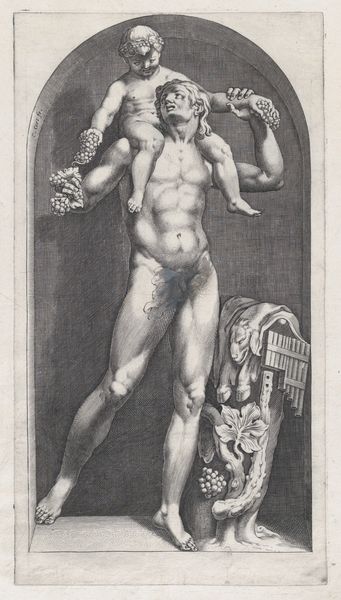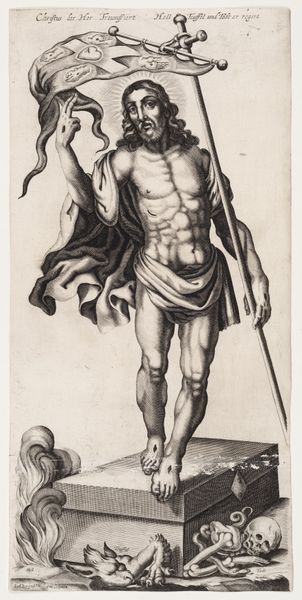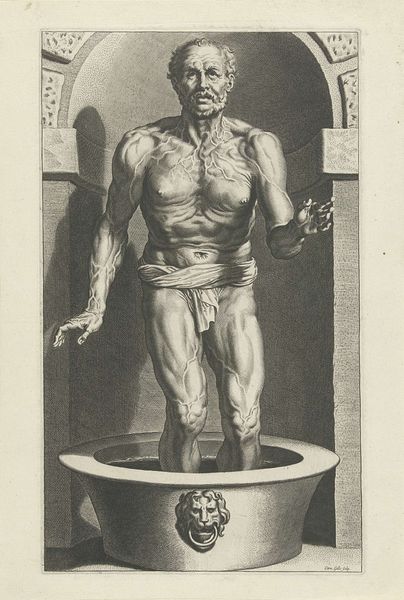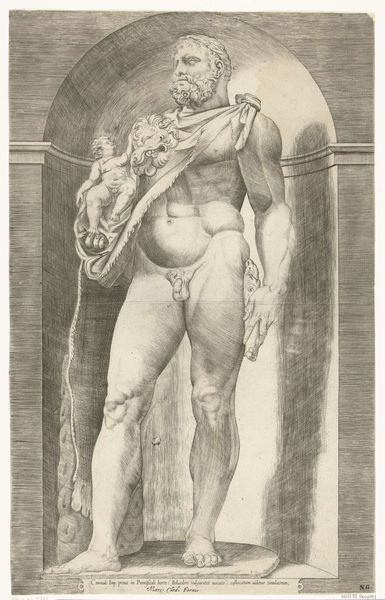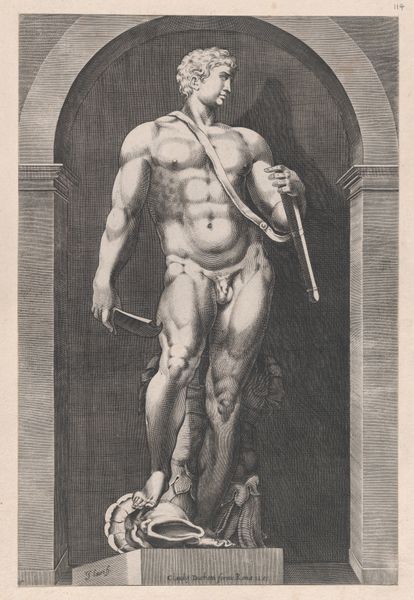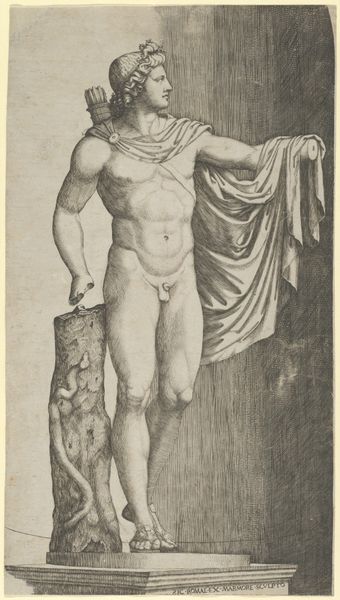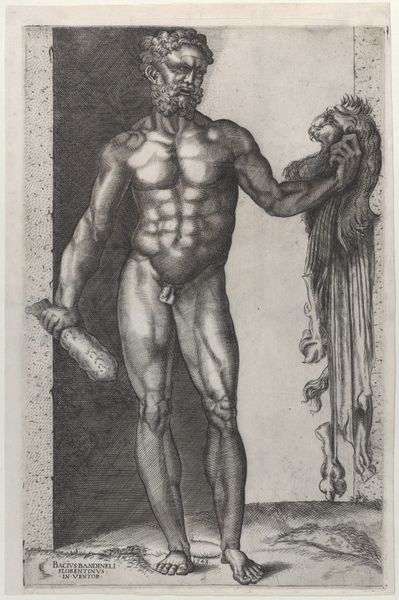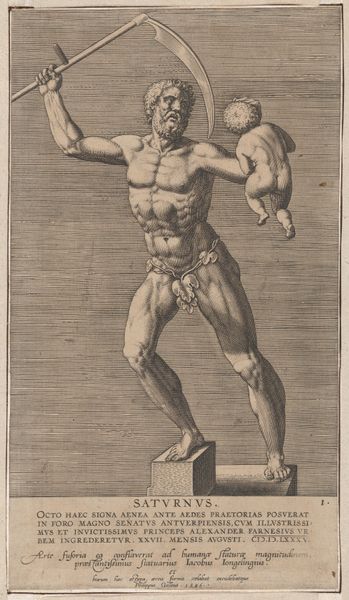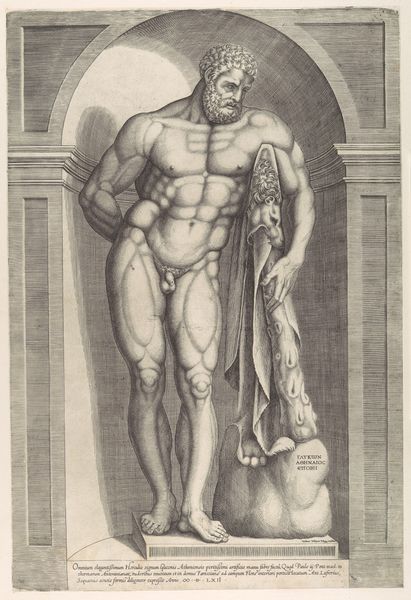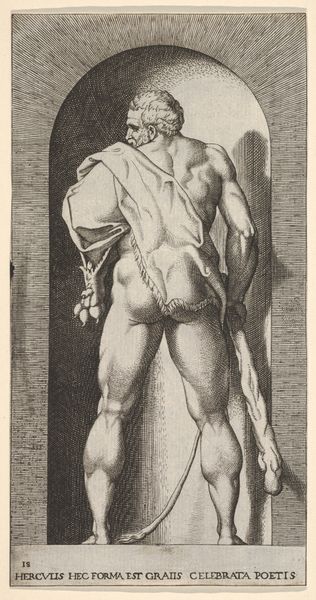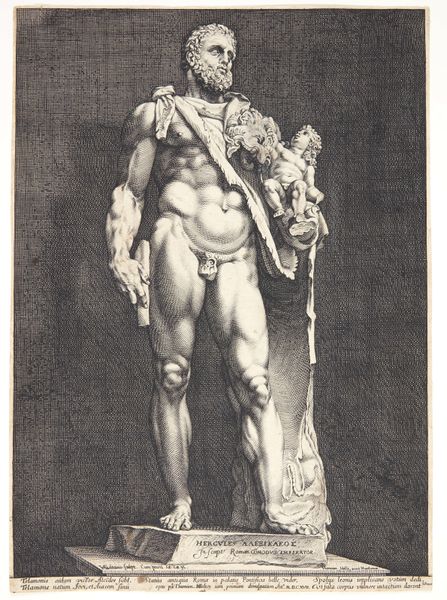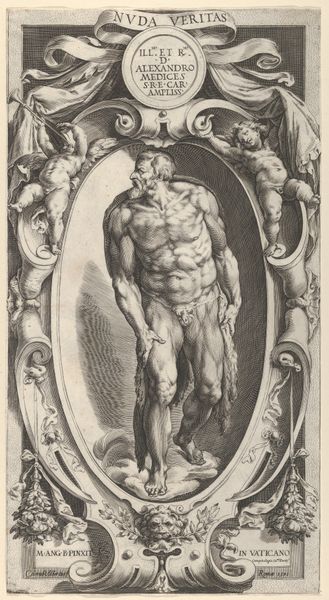
Seneca at the bath, standing in a niche with his feet in a basin 1610 - 1620
0:00
0:00
drawing, print
#
portrait
#
drawing
#
baroque
# print
#
figuration
#
portrait reference
#
portrait drawing
#
history-painting
#
academic-art
#
nude
Dimensions: Sheet (Trimmed): 13 3/16 × 7 5/8 in. (33.5 × 19.4 cm)
Copyright: Public Domain
This print, depicting Seneca at the bath, was made by Cornelis Galle I in the late 16th or early 17th century. It is an engraving, meaning the image was incised into a metal plate, likely copper, using a tool called a burin. Look closely and you'll notice how the varying depths and thicknesses of the lines create tone and texture, from the smooth planes of Seneca's skin to the detailed musculature and veins. The process demands precision and control, as each line contributes to the overall image. Galle masterfully uses the technique to convey the weight and form of Seneca's figure, and the cool stillness of the bath. Engraving was a key technology in the early modern period, used for everything from reproducing paintings to creating illustrations for books. It’s a labor-intensive process, requiring both artistic skill and technical knowledge. By appreciating the craft of engraving, we gain a deeper understanding of the image itself, recognizing the artistry involved in translating Seneca's likeness into a printed form. It reminds us that even seemingly straightforward images are the result of skilled labor and careful material choices.
Comments
No comments
Be the first to comment and join the conversation on the ultimate creative platform.
